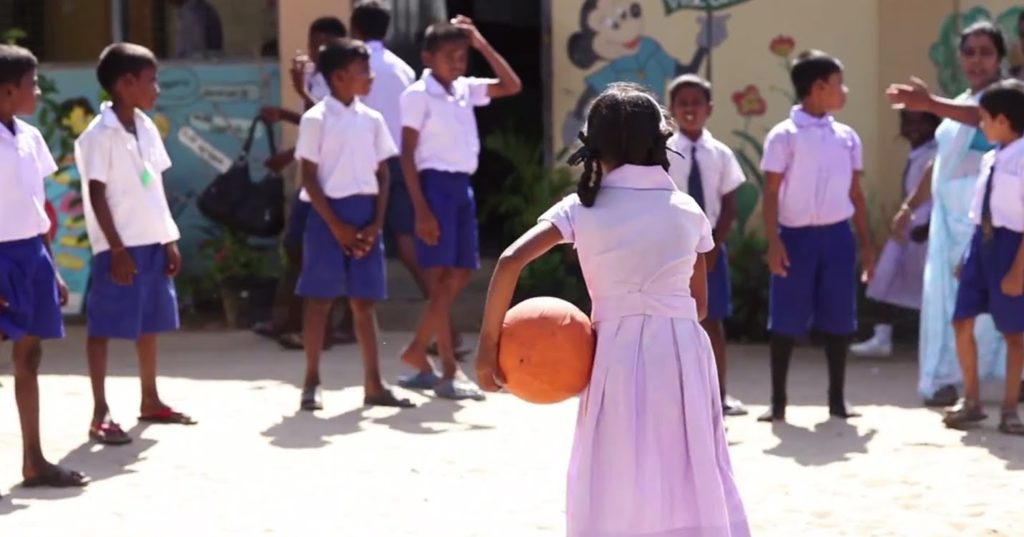Featured image courtesy UNICEF
I enjoyed reading Laksiri Fernando’s article and endorse most of his comments under policy areas 1-7, but not those under policy area 8 for reasons that I will elaborate later on.
I am particularly appreciative of what Laksiri has to say on the need to eliminate caste discrimination; and to adopt a trilingual language policy. On Caste, the initiative needs to come from Sri Lankan Buddhists to eliminate the continuation of caste based Nikayas as well as other manifestations of caste consciousness within Buddhism; from Hindus to eliminate all caste based oppression including the vestiges of untouchability, especially in relation to temple entry and access to public places; and from Sinhalese and Tamils (including Christians) to eliminate even the most subtle public identification of the caste identity of individuals, notably in marriage advertisements.
In respect of a trilingual language policy, we have the advantage of a highly literate population that is also very responsive to financial and other incentives, whether for employment or for admission to educational or training institutions. What is needed is to work out appropriate schemes of incentives for such employment, education and training, backed by an island-wide trilingual school network supplemented by out of school language training institutions. It will not be many years before we have a nation that is predominantly trilingual.
The one issue on which I have clear differences of opinion is on affirmative action /reverse discrimination. This should be a device to provide a level playing field for those with unequal opportunities due to external factors beyond their control. Accordingly African Americans, Native Americans (Red Indians), women and certain minorities in the USA received quota benefits for nearly two decades. Similarly, in India, Untouchables (Dalits), Tribals and certain other “Backward Classes” continue to receive quota benefits in respect of employment or education in state sector institutions.
The confusion of affirmative action/reverse discrimination with area quotas (in relation to university admissions) is peculiar to Sri Lanka. The scheme of district quotas in university admissions in Sri Lanka is unrelated to affirmative action/reverse discrimination. District quotas, in design and in impact boost further the privileges of the children of the rural elite. They gain from good schooling (they invariably gain admission as day scholars to the best schools in the district or as boarders to good schools elsewhere) and are further privileged on account of affluence at home. There are privileged and under privileged populations and also schools of widely different quality in every district. The children of the elite everywhere have access to good schooling. On the other hand children of the underclass have difficulties in accessing good schooling anywhere.
For example, Royal College and Visakha Vidyalaya cater predominantly to the upper classes in preference to the underclass in their neighbourhood. This holds true of elite schools everywhere. In every district there are lesser schools to serve the underclass. The children of elite schools anywhere are not primarily from the neighbourhood, judging by the glut of cars and vans that converge on these schools at opening and closing times. Similarly, Trinity and Hillwood cater primarily to the elite of Kandy and elsewhere. These children are in no way handicapped by being surrounded by estate schools and depressed Sinhalese medium schools. However, the children of Trinity and Hillwood gain a boost in university admissions due to being surrounded by under privileged schools. In turn, schools for low income populations all over Colombo and Jaffna lose out in university admissions due to being surrounded by numerous elite schools. This is certainly not affirmative action/reverse discrimination.
Some factors that impact on performance in school are related to the quality of the school and others to the socio-economic and education levels of parents and family. The latter is difficult to quantify and therefore to compensate for. Yet schools can be graded objectively (they already are) and these grades, further refined periodically in relation to individual university faculties that the children qualify to enter each year can be objectively quantified and university admissions duly adjusted. Such a scheme would indeed be affirmative action/reverse discrimination, which disrtrict quotas are definitely not.
Further, as Laksiri points out, reconciliation requires attention to several other more contentious items such as dealing with killings, disappearances, physical disabilities, physiological trauma, displacement, loss of land, occupation as well as the overwhelming presence of the military among the population most affected by the war. These issues are more difficult to deal with. Healing in respect of issues listed 1-7 by Laksiri, and issue 8 as amended above, will go a long way towards reconciliation and make it easier to deal with the more controversial issues.
Readers who enjoyed this article might find “Dealing with Caste prejudice and inequalities in Sri Lanka” and “The Art of Connection: Two organisations take on reconciliation” enlightening.
